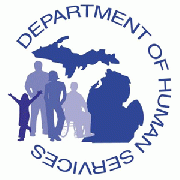‘TELLING OUR STORY’
One-third of Michiganians sought DHS help as economy deteriorated
With Michigan coming in as the state with the second-highest unemployment rate, and the worst nationwide economy since the Great Depression, the number of those seeking government aid has skyrocketed in the past few years. The Michigan Department of Human Services (DHS) reports having received over 200,000 applications for assistance every month during the 2010 fiscal year. And although the demand was high, and resources limited, the DHS responded.

|
| “This year alone we served 2.9 million people, and Michigan is only a state of 10 million people. Nearly 30% of the state’s population is served by the state’s Department of Human Services.” Ismael Ahmed Director of Michigan’s Department of Human Services |
“We wanted to tell our story and share our success,” said Edward Wood, director of the Office of Communications at the DHS, “as a testimony to our employees and to say thank you. We appreciate what you do day in and day out, because without our employees we wouldn’t be successful.” In the past year, the DHS made progress and broke records in child welfare, food and medical assistance, home weatherization and creating new routes for those seeking assistance. A short video highlighted a new route for those receiving assistance from the DHS, the Family Resource Center, which is located within or near a neighborhood school, with goals developed for that community in particular. Currently there are 52 Family Resource Centers active in the state. At these centers clients can access basic DHS services as well as work with the school and the DHS to “decrease student behavior problems, absenteeism and truancy, and increase parental participation and academic performance,” according to a press release.
Michigan was the first state to utilize the electronic eligibility system called BRIDGES.
“The truth is it is difficult just to get the paperwork done, and our workers struggle to make life better for people,” said Ahmed. The BRIDGES system lightens the weight of the caseloads for each worker, which jumped from 125 cases in 1970 per caseworker to 720 per caseworker today. With this system, clients can send in applications online. The DHS has received nearly 240,000 applications online.
“(It’s) the most complex broadly chained human service system in this country today,” Ahmed said. “Case weights are being lowered. As our resources shrink and the availability of offices and workers, efficiency has to go down, and this is one answer.” In the last year, the DHS has reduced the wait time for those seeking assistance, coming from the worst in the country, to one of the best. Several individuals gave testimony as to the help they received from the DHS.
One was Tanya Williams, a woman who lost her job, and remains unemployed although she holds a master’s degree. She wrote a thank you letter to the department.
“My benefits really have been a blessing to me. I started to receive food stamps when I lost my job due to lack of funding and I needed assistance. I didn’t want to go to my family to ask them for money to buy food for me,” Williams said. “I’m so thankful to the Department of Human Services for giving assistance to 2.9 million people. I’m one of them and I’m thankful for it.”
Ahmed felt the most progress was made in the department of child welfare. The DHS, along with private partners, reduced the number of children in foster care from 16,000 to 15,000; held the nation’s largest Adoption Day, and closed more than 63% of cases involving children awaiting adoption for more than a year.
“We completed 3,030 adoptions, that’s 3,030 children who got a forever family,” said Terri Gilbert, deputy director of the Children’s Services Administration. “And Michigan was awarded three and a half million dollars in federal adoption incentive money, the third highest in the country, and that is going to enable us to expand recruitment of adoptive homes and expand the ability of children to find adoptive families.”
The work of the DHS partners was emphasized throughout the event. The DHS partnered with organizations like the Arab Community Center for Economic and Social Services (ACESS), Michigan Community Action Agency Association and the Michigan Federation of Children, all of whom were present.
“I must say it was probably one of the most successful collaborations we have had, working with the DHS office. (It was) beneficial not only to DHS and ACCESSS, but to the mutual clients we serve,” said ACESS Social Services Director Amne Darwish Talab. “We must unite and integrate our services to make sure we are giving our clients the maximum level of services. I must say the DHS has stepped up to the plate.”
“We’re doing more with less. We’re making a real positive difference,” Ahmed said.
For more information about DHS visit www.michigan.gov/dhs.






Leave a Reply